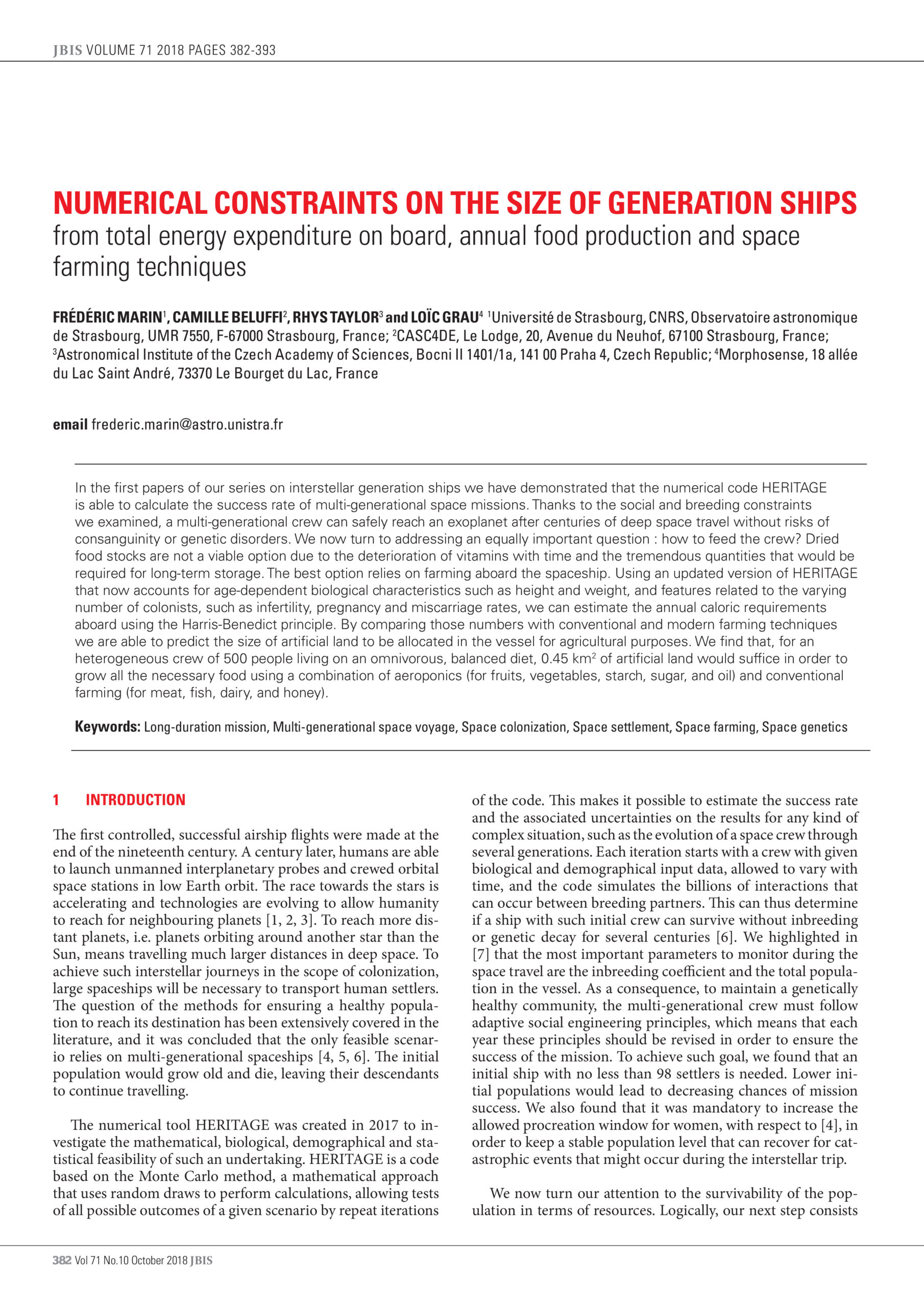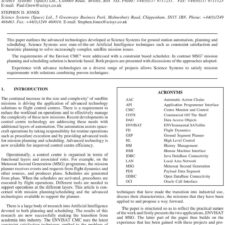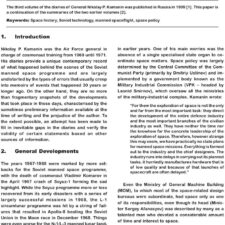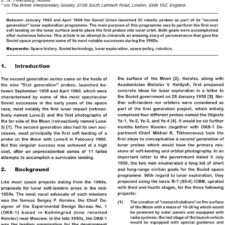Numerical Constraints on the Size of Generation Ships from total energy expenditure on board, annual food production and space farming techniques
£5.00
F. Marin et al. (2018), JBIS, 71, pp.382-393
Refcode: 2018.71.382
Keywords: Long-duration mission, Multi-generational space voyage, Space colonization, Space settlement, Space farming, Space genetics
Abstract:
In the first papers of our series on interstellar generation ships we have demonstrated that the numerical code HERITAGE is able to calculate the success rate of multi-generational space missions. Thanks to the social and breeding constraints we examined, a multi-generational crew can safely reach an exoplanet after centuries of deep space travel without risks of consanguinity or genetic disorders. We now turn to addressing an equally important question : how to feed the crew? Dried food stocks are not a viable option due to the deterioration of vitamins with time and the tremendous quantities that would be required for long-term storage. The best option relies on farming aboard the spaceship. Using an updated version of HERITAGE that now accounts for age-dependent biological characteristics such as height and weight, and features related to the varying number of colonists, such as infertility, pregnancy and miscarriage rates, we can estimate the annual caloric requirements aboard using the Harris-Benedict principle. By comparing those numbers with conventional and modern farming techniques we are able to predict the size of artificial land to be allocated in the vessel for agricultural purposes. We find that, for an heterogeneous crew of 500 people living on an omnivorous, balanced diet, 0.45 km2 of artificial land would suffice in order to grow all the necessary food using a combination of aeroponics (for fruits, vegetables, starch, sugar, and oil) and conventional farming (for meat, fish, dairy, and honey).





